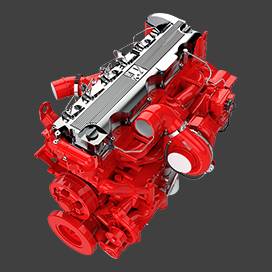Jul . 30, 2024 04:22 Back to list
How to Effectively Use Spray Paint for Your Vehicle's Brake Drum Restoration and Maintenance
A Guide to Spray Painting Brake Drums
When it comes to vehicle maintenance, one area that often gets overlooked is the brake system. Brake drums, a crucial component in many vehicles, play an essential role in ensuring safe braking performance. Over time, brake drums can become rusty, corroded, and visually unappealing, which not only affects their aesthetics but can also lead to decreased performance. One effective way to enhance their appearance and protect them from harmful elements is through spray painting. In this article, we will explore the benefits of spray painting brake drums and provide a step-by-step guide to get it done correctly.
Why Spray Paint Brake Drums?
Spray painting brake drums serves multiple purposes. Firstly, it improves the overall look of the vehicle. Many car enthusiasts take pride in their vehicle's appearance, and freshly painted brake drums can add a professional touch. Secondly, paint acts as a protective barrier against moisture, dust, and debris which can lead to rust and degradation over time. This added layer of protection can extend the lifespan of your brake drums, ensuring they function efficiently for longer.
Additionally, using high-temperature paint specifically designed for brake components can withstand the intense heat generated during braking. This means that your brake drums will not only look good but also remain safe under high-stress conditions.
Preparation
Before you begin the spray painting process, it's vital to prepare adequately. Here’s a list of supplies you will need - High-temperature spray paint (available at automotive stores) - Brake cleaner or degreaser - Sandpaper or a wire brush - Clean rags or paper towels - Painter’s tape - Safety goggles and gloves - A well-ventilated workspace
Start by removing the wheel to access the brake drums. Once you have clear access, use brake cleaner or degreaser to clean the surface of the drum thoroughly. This step is critical as any dirt or grease can prevent the paint from adhering properly.
Sanding and Masking
spray paint brake drums

After cleaning, use sandpaper or a wire brush to remove any rust or flaky paint. This roughens up the surface, ensuring better adhesion for the new paint. Once you’ve prepped the drum, rinse it off and allow it to dry completely.
Next, use painter’s tape to cover any areas that you do not want to paint, such as the brake pads or other critical components. Taking this precaution will help you maintain a clean look and avoid any unwanted paint marks on sensitive areas.
Painting
With everything prepared, it’s time to apply the spray paint. Shake the can according to the manufacturer’s instructions, and hold it approximately 6-12 inches from the surface of the brake drum. Spray in thin, even coats, allowing each coat to dry briefly before applying the next. Typically, two to three coats are sufficient for a thorough covering, enhancing both the look and protection of the drums.
Finishing Touches
Once you’ve achieved the desired coverage and have allowed the paint to dry completely, carefully remove the painter’s tape. Inspect your work and touch up any areas that might need extra attention. After this, reassemble your wheel and ensure everything is securely in place.
Conclusion
Spray painting brake drums is a simple yet effective way to improve the appearance and longevity of your vehicle’s braking system. With a few materials and some careful preparation, you can add a personal touch to your car while simultaneously protecting vital components. Remember to choose the right high-temperature paint for optimum results, and enjoy the satisfaction of a well-maintained vehicle.
-
Scania Brake Drums: OEM Quality for Optimal Safety & Durability
NewsAug.16,2025
-
R.V.I: Advanced Remote Visual Inspection for Precision
NewsAug.15,2025
-
Discover HYUNDA: Innovative Vehicles, Equipment & Solutions
NewsAug.14,2025
-
R.V.I: Unlock Advanced Insights & Real-time Performance
NewsAug.13,2025
-
Kamaz Brake Drum: Durable & Reliable for Heavy Duty Trucks
NewsAug.12,2025
-
Heavy Duty Iveco Brake Drum - Premium Quality & Safety
NewsAug.11,2025
